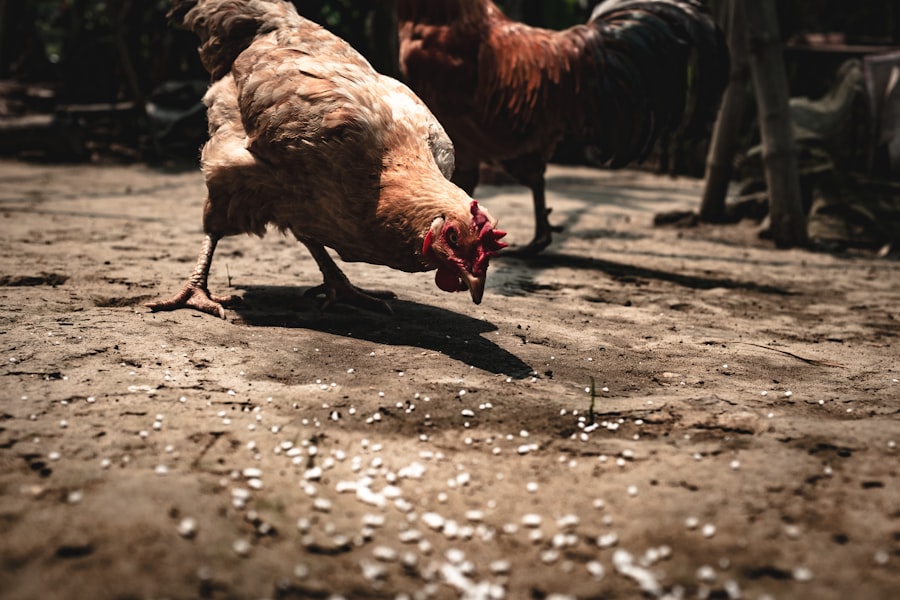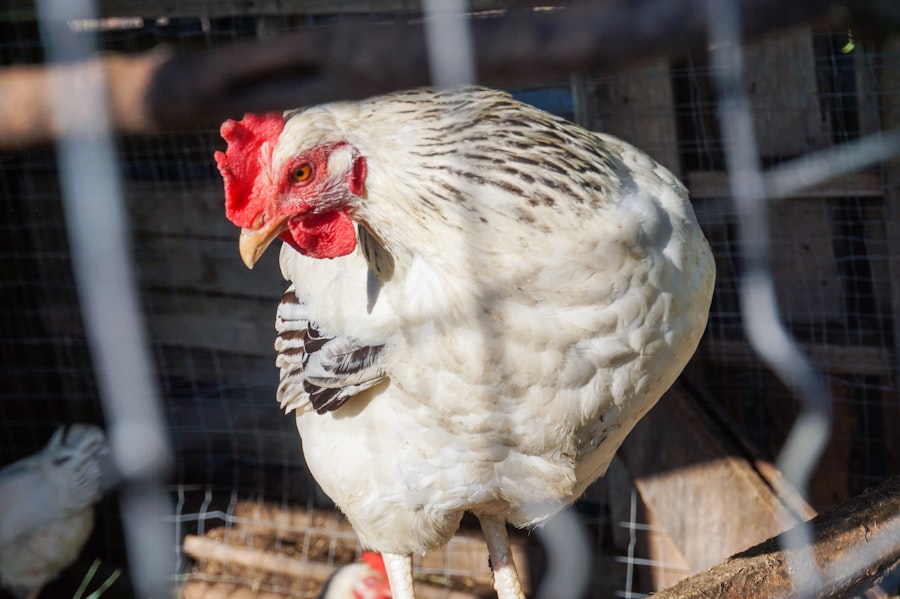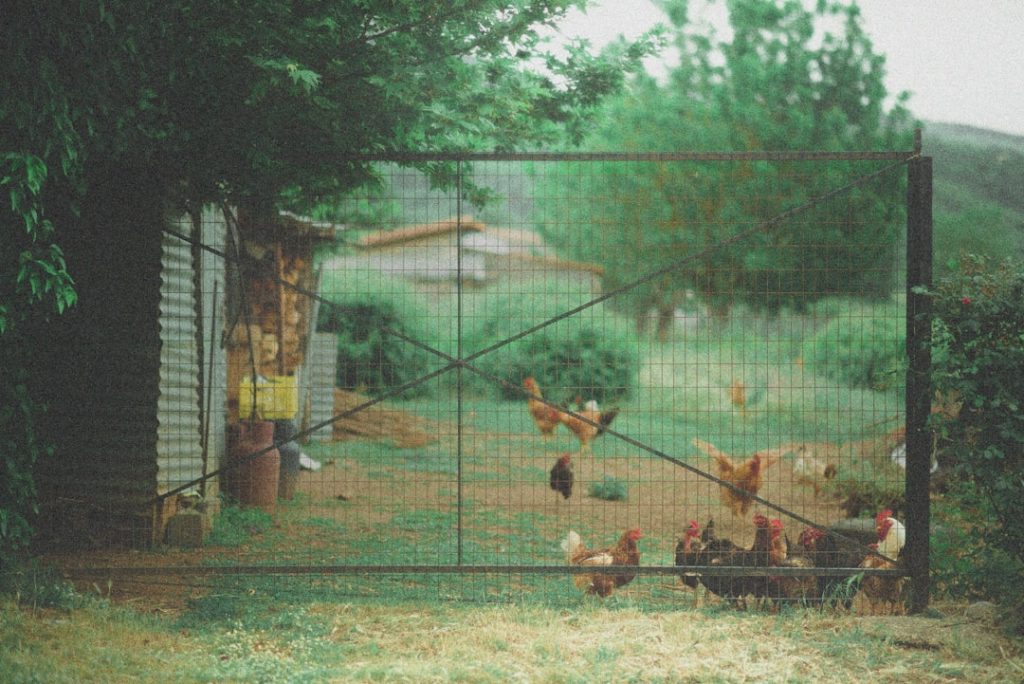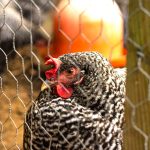Raising chickens offers numerous benefits for both experienced farmers and novice backyard enthusiasts. These versatile birds provide a sustainable source of fresh eggs, assist in pest control within gardens, and can serve as engaging pets. However, the process of integrating new chickens into an existing flock presents unique challenges that require careful consideration and planning.
This article examines the critical aspects of introducing new chickens to an established flock, including the importance of initially confining new arrivals to the coop. It discusses key factors to consider when determining the appropriate duration for keeping new chickens separated, outlines steps for a successful introduction process, and identifies indicators that signal when new chickens are prepared to join the main flock. Additionally, the article provides practical advice for facilitating a smooth transition for newly introduced chickens, ensuring their well-being and the harmony of the entire flock.
Table of Contents
- 1 The Importance of Keeping New Chickens in the Coop
- 2 Factors to Consider When Determining How Long to Keep New Chickens in the Coop
- 3 Steps for Introducing New Chickens to the Existing Flock
- 4 Signs that New Chickens are Ready to Leave the Coop
- 5 Tips for Ensuring a Smooth Transition for New Chickens
- 6 Conclusion and Final Thoughts on Keeping New Chickens in the Coop
- 7 FAQs
Key Takeaways
- Raising chickens can be a rewarding experience for both beginners and experienced farmers.
- Keeping new chickens in the coop is important to protect them from predators and help them acclimate to their new environment.
- Factors to consider when determining how long to keep new chickens in the coop include their age, health, and the existing flock dynamics.
- Introducing new chickens to the existing flock should be done gradually and in a controlled manner to minimize stress and aggression.
- Signs that new chickens are ready to leave the coop include their ability to integrate with the existing flock and their confidence in exploring the outdoor environment.
- Ensuring a smooth transition for new chickens involves providing adequate space, food, and water, as well as monitoring their behavior and health.
- Keeping new chickens in the coop requires careful consideration and planning, but with the right approach, it can lead to a successful and harmonious flock.
The Importance of Keeping New Chickens in the Coop
Acclimation and Conflict Prevention
When introducing new chickens to an existing flock, it is crucial to keep them in the coop for an extended period of time. This allows the new chickens to acclimate to their new environment and helps prevent any potential conflicts with the existing flock. Keeping the new chickens in the coop also gives them a chance to establish their own pecking order and allows the existing flock to become familiar with their presence.
Disease and Parasite Prevention
Additionally, keeping the new chickens in the coop helps reduce the risk of spreading any potential diseases or parasites to the existing flock. By keeping the new chickens in a separate area, you can monitor their health and behavior more closely, ensuring that they are in good condition before being integrated with the rest of the flock.
Factors to Consider
It is important to note that the length of time new chickens should be kept in the coop can vary depending on several factors, including the age and size of the new chickens, the size of the existing flock, and the overall dynamics of the coop.
Successful Integration
By taking these factors into consideration, you can determine the best course of action for introducing new chickens to your existing flock.
Factors to Consider When Determining How Long to Keep New Chickens in the Coop

When determining how long to keep new chickens in the coop, there are several factors that should be taken into consideration. The age and size of the new chickens play a significant role in how long they should be kept separate from the existing flock. Younger chickens may require a longer adjustment period, as they are more vulnerable and may need extra time to establish themselves within the pecking order.
Additionally, smaller or more timid chickens may also need more time to build up their confidence before being introduced to the rest of the flock. The size of the existing flock is another important factor to consider. If you have a large flock, it may take longer for the new chickens to integrate and establish their place within the group.
On the other hand, if you have a smaller flock, the adjustment period may be shorter as there are fewer birds for the new chickens to interact with. The overall dynamics of the coop, including the personalities of the existing flock members and the layout of the coop itself, can also impact how long new chickens should be kept in the coop. By observing these factors and taking them into account, you can make an informed decision about when it is appropriate to introduce new chickens to your existing flock.
Steps for Introducing New Chickens to the Existing Flock
Introducing new chickens to an existing flock should be done gradually and with careful consideration. There are several steps that can be taken to help ensure a smooth transition for both the new and existing chickens. One important step is to provide a separate area within the coop for the new chickens to reside in during their adjustment period.
This can be achieved by using a wire mesh or fencing to create a partition within the coop, allowing the new chickens to see and interact with the existing flock without being able to physically interact with them. Another important step is to monitor the behavior of both the new and existing chickens during this adjustment period. It is normal for there to be some level of pecking and squabbling as the new pecking order is established, but it is important to intervene if any aggressive behavior becomes excessive or if any chicken appears to be getting bullied or injured.
Providing plenty of space, food, and water for both groups of chickens can also help reduce tension and competition during this adjustment period. Once the new chickens have had ample time to acclimate to their new environment and have shown signs of being ready to integrate with the existing flock, they can be gradually introduced by allowing supervised interactions between the two groups. This can be done by letting them free-range together in a neutral territory outside of the coop or by allowing them to interact through a wire mesh barrier within the coop.
By following these steps and closely monitoring their interactions, you can help ensure a successful integration of new chickens into your existing flock.
Signs that New Chickens are Ready to Leave the Coop
There are several signs that can indicate when new chickens are ready to leave the coop and be integrated with the existing flock. One important sign is when the new chickens appear confident and comfortable within their separate area of the coop. This can be observed through their behavior, such as actively exploring their surroundings, interacting with each other in a relaxed manner, and showing curiosity towards the existing flock without displaying signs of fear or aggression.
Another sign that new chickens are ready to leave the coop is when they begin displaying submissive behavior towards the existing flock members. This can include behaviors such as lowering their heads, stepping aside when approached by other chickens, and allowing themselves to be pecked without retaliating. These submissive behaviors indicate that the new chickens are acknowledging the authority of the existing flock members and are ready to integrate into their social structure.
Additionally, if you notice that there is minimal aggression or tension between the two groups when they have supervised interactions, this can also be a sign that the new chickens are ready to leave the coop. By observing these signs and taking note of their behavior, you can determine when it is appropriate to allow the new chickens to join the existing flock.
Tips for Ensuring a Smooth Transition for New Chickens

Providing Adequate Space and Resources
To minimize stress and promote positive interactions between new and existing flock members, it’s essential to provide plenty of space within the coop for both groups of chickens. This helps reduce competition for resources and minimizes tension as they adjust to each other’s presence. Additionally, providing multiple food and water sources within the coop can prevent conflicts over these essential resources.
Enriching the Environment
Ensuring each group has access to their own food and water can help reduce competition and promote a more harmonious coexistence. It’s also crucial to provide plenty of enrichment within the coop, such as perches, nesting boxes, and dust bathing areas, to keep both groups of chickens occupied and stimulated during the adjustment period. This helps reduce boredom and potential aggression between them.
Monitoring and Intervening
Closely monitoring the interactions between the new and existing flock members during the adjustment period is vital. It’s essential to intervene if any aggressive behavior becomes excessive or if any chicken appears to be getting bullied or injured. By taking these proactive steps and providing a supportive environment, you can help ensure a smooth transition for new chickens into your existing flock.
Conclusion and Final Thoughts on Keeping New Chickens in the Coop
In conclusion, introducing new chickens to an existing flock requires careful planning and consideration in order to ensure a successful integration. By keeping new chickens in a separate area within the coop for an extended period of time, monitoring their behavior, and following gradual introduction steps, you can help minimize stress and promote positive interactions between them and the existing flock members. It is important to take into account various factors such as age, size, and dynamics of both groups of chickens when determining how long new chickens should be kept in the coop.
By observing signs that indicate when they are ready to leave the coop and taking proactive steps to ensure a smooth transition, you can help promote a harmonious coexistence between your new and existing flock members. Overall, keeping new chickens in the coop requires patience, observation, and proactive management in order to ensure a successful integration into your existing flock. By following these guidelines and taking into account various factors that impact this process, you can help create a positive environment for all of your feathered friends.
If you’re wondering how long to keep new chickens in the coop, you may also be interested in learning about different types of chicken coops. Check out this article on A-Frame Chicken Coops to see if this style would be a good fit for your flock. Understanding the different options for coop designs can help you make the best choice for your chickens’ living space.
FAQs
How long should new chickens stay in the coop?
New chickens should stay in the coop for at least 1-2 weeks to allow them to acclimate to their new environment and become familiar with the coop as their home.
Why is it important to keep new chickens in the coop for a certain period of time?
Keeping new chickens in the coop for a period of time allows them to establish a sense of security and familiarity with their surroundings, reducing the risk of stress and potential escape attempts.
What should be considered before allowing new chickens to free-range?
Before allowing new chickens to free-range, it is important to ensure that they are fully comfortable and familiar with their coop and the surrounding area. Additionally, it is important to consider any potential predators in the area and take necessary precautions to protect the chickens.
How can I help new chickens adjust to their coop?
To help new chickens adjust to their coop, provide them with plenty of food and water, a comfortable roosting area, and opportunities for exercise. Additionally, spending time near the coop and speaking to the chickens can help them become more comfortable with their new environment.
Meet Walter, the feathered-friend fanatic of Florida! Nestled in the sunshine state, Walter struts through life with his feathered companions, clucking his way to happiness. With a coop that’s fancier than a five-star hotel, he’s the Don Juan of the chicken world. When he’s not teaching his hens to do the cha-cha, you’ll find him in a heated debate with his prized rooster, Sir Clucks-a-Lot. Walter’s poultry passion is no yolk; he’s the sunny-side-up guy you never knew you needed in your flock of friends!







